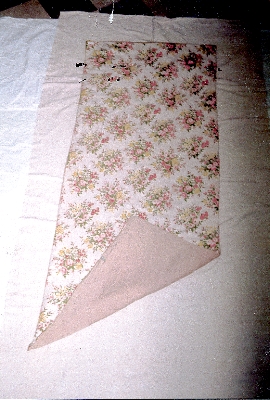Quilt No.51GPM - Griffith Pioneer Park Museum

770 x 340mm
The quilt was made by Mrs Edna Richards (born Holland), of 'Holmelands', Merriwagga (between Goolgowi and Rankin Springs), c.1950. Donated to Griffith Pioneer Park Museum, NSW, by Edna's daughter Lorraine Richards.
"The rugs were made by Lorraine's mother, Mrs Edna Richards, nee Holland, around the 1950s when the family were farming at 'Holmelands', Merriwagga.
Mrs Richards, now 83 years old, was born in my old home territory of Grenfell. She met her husband, Arthur, when she came to Griffith to work at the hospital in 1935. Arthur had moved here from Sydney with his parents 1922.
'Holmelands' was a sheep and wheat property, and was originally very isolated, 'with no roads or anything'. Most of the services we take for granted, like electricity, only arrived after the Richards had moved into town in 1974.
The home had six bedrooms, including sleepouts, and Mrs Richards made waggas, not only for the beds of her own seven children, but also spares for shearers and others who stayed at the house from time to time - at least a dozen Lorraine reckons.
They were used as a top cover over grey army blankets and hot water bottles. � the Australian sleepout, with its gauze walls, now almost a thing of the past - but all those who remember sleeping in one know how cold they could get in winter!
The two waggas donated by Mrs Richards are both single bed size, and stuffed with old jumpers. Three sides are covered with single pieces of cloth. The fourth one is made up from oddly shaped pieces, all of the same material, neatly overlaid and machine sewn, like crazy patchwork. Lorraine and I surmised such oddly shaped pieces may have been scraps left over from dressmaking."
[Robyn Oliver curator Griffith Pioneer Park Muaseum, article in the Area News 29.7.94]
Related Quilts:
1740 x 1240mm
2000 x 1660mm
520 x 520mm
1905 x 1525mm






